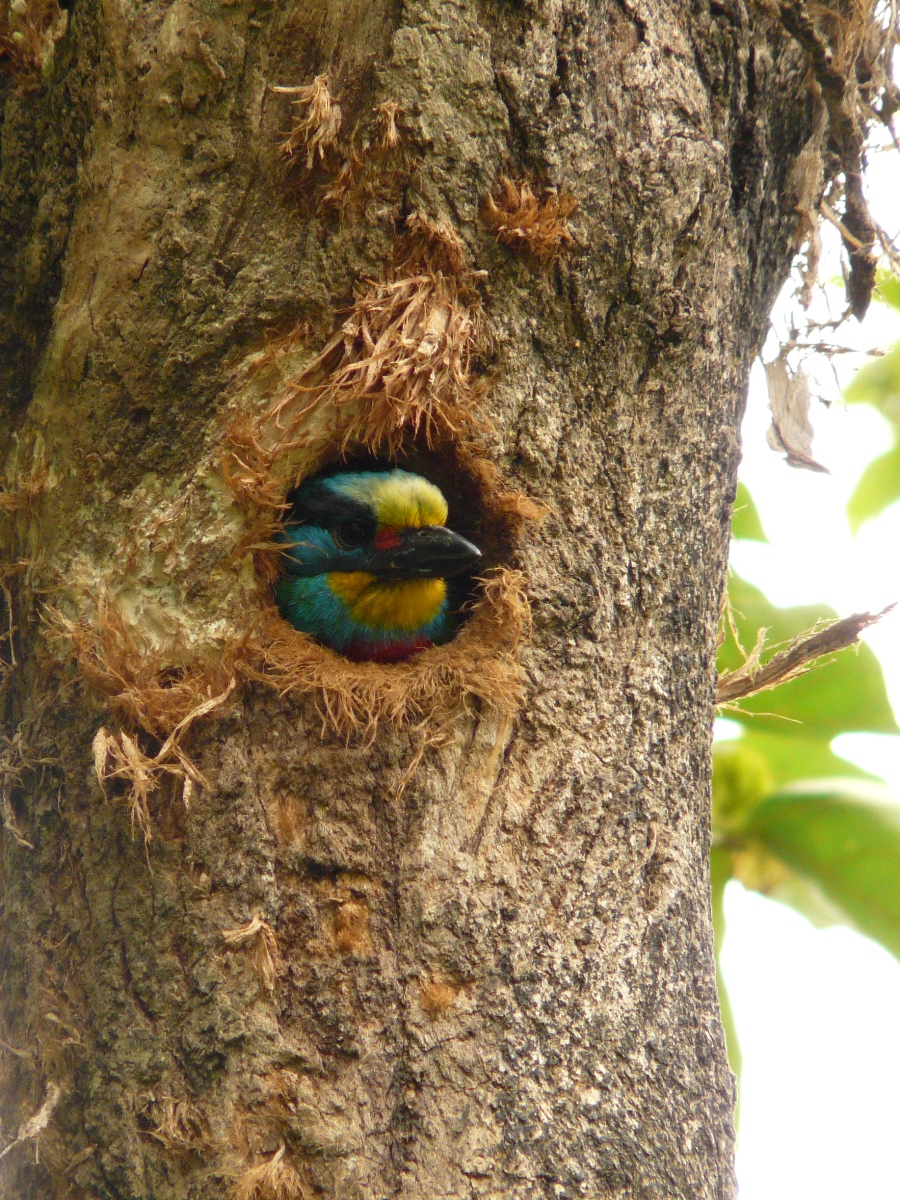Anyways, there were some time for me to be out in the botanical garden looking for birds, including the barbets. Some different (and lifer) species are: a Common Kingfisher (Alcedo atthis), a pair of Chinese Bulbul younglings, and a Black-naped Monarch (Hypothymis azurea) - all of them are photographed below. I also saw a Gray Treepie today perched on a satellite tower of a building.
 A co-worker and I took over for a pair of volunteer observers working for over five hours. All of our volunteers (excluding me) are mostly retired teachers who like working outdoors with nature.
A co-worker and I took over for a pair of volunteer observers working for over five hours. All of our volunteers (excluding me) are mostly retired teachers who like working outdoors with nature.The parental pair of Muller's Barbets are still incubating their eggs, and switching over every thirty minutes to an hour. During this period, the parent incubating the egg will occasionally peek out of the hole and look around. Perhaps wondering why its mate has not returned, or maybe it is just bored inside the hole. We have not yet able to devise a method to record the actions inside the nest as the supply light from the video recorder frightens the adults and they will abandon the hole. Does anyone know any good method of setting up cameras inside a dark nest, particularly for a cavity nester?


2 comments:
Wonderful.... Nice for the TV show!!!
Thanks, Chris.
Post a Comment